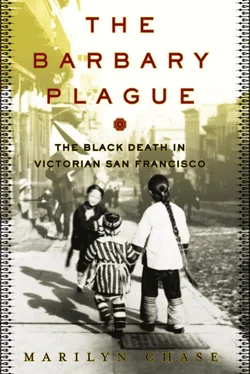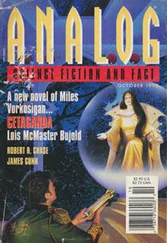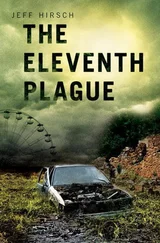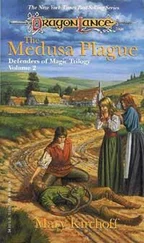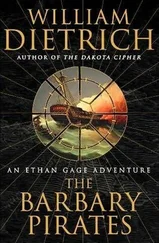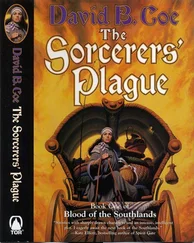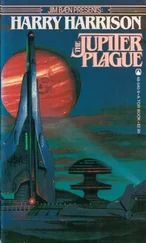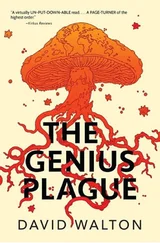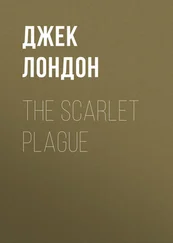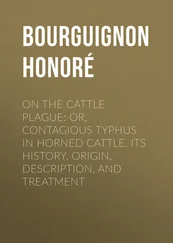In their haste to discover plague, however, the rival scientists Kitasato and Yersin announced different results of the Gram’s stain. Kitasato was first to declare his results and rushed to tell the world that the plague bacteria stained blue—Gram positive. Later he vacillated, saying he didn’t know.
Yersin arrived in Hong Kong four days after his rival. Lacking the authority to perform autopsies in the major hospital, he had to improvise. Working in a tent behind his straw hut, he paid British soldiers doing undertaker duty for access to bodies awaiting burial. After opening their coffins and dusting the lime off their bodies, Yersin biopsied their glands and found “a veritable puree of microbes.” 1Once purified and tested with the Gram’s stain, the plague bacteria turned pink—Gram negative. Yersin had found the right answer.
To this day, Kitasato’s blunder is baffling. Some historians speculate that he used a biopsy sample that was accidentally contaminated with staph or strep germs, which stained blue.
Though Kitasato and Yersin are usually credited as codiscoverers of the plague bacterium, it was Yersin’s discovery that prevailed and prompted a name change from Bacillus pestis to Yersinia pestis . The landmark discovery gave scientists all over the world a way to identify the deadly germ. 2
Just a baby germ in evolutionary terms, Yersinia pestis is now thought to be anywhere from 1,500 to 20,000 years old. It evolved from an ancient bacterium known as Yersinia pseudotuberculosis , a bug between 400,000 and 1.9 million years old that causes intestinal distress. From this benign parent, a germ of staggering virulence was born, one that when left untreated remains the most lethal bacterium known to humankind. Even today, when doctors have the curative antibiotic drugs that were undiscovered in 1900, bubonic plague is still evolving and springing surprises on the unsuspecting physician. In 1995, a drug-resistant strain of bubonic plague sickened a patient in Madagascar. Fortunately, alert scientists and doctors saved this patient with a sulfa drug combination to which the bug ultimately succumbed. But to shaken scientists, the message was clear: Plague is still active worldwide, one of many contenders in the global contest for microbial supremacy. 3
Yersin’s discovery gave Joseph Kinyoun’s culprit a face and a fast tool with which to identify it. There were other tests, too: On culture plates, colonies of plague look like ground glass. And he applied Koch’s postulates to prove that the plague germ had in fact killed Wong Chut King. First he isolated the bacteria. Then he grew them in pure culture. He injected the germs into lab animals. When the animals died of the same disease, he isolated the germ again, and voilà, he had apprehended the killer—bubonic plague.
But to the San Francisco citizen of 1900—even to most practicing physicians—the new bacteriology was still a form of black magic: mysterious, dimly understood, untrustworthy, and inferior to the laying on of hands and the observation of symptoms at the bedside. Fevers and swollen glands could signify anything from strep to syphilis, they said. Many practicing physicians in town dismissed the bacteriologist Kinyoun, and most folks trusted their family doctors. 4
Newspapers lampooned the plague cleanup. Cartoonists sketched doctors plucking germs off Chinese scrolls. The bacteria were depicted as grinning, gargoyle-faced tadpoles. Caricatures of pigtailed immigrants were shown fleeing town. And on March 14, the San Francisco Call newspaper published a mock obituary, reporting the death of “A. Monk—At the Angel Island bubonic germ stock farm.”
No one was more skeptical than Ng Poon Chew, the Presbyterian minister who founded and edited Chinatown’s leading newspaper, the Chung Sai Yat Po , or East-West Daily . In his story announcing the results of the plague test, he spoke for an entire community that feared not so much that they would die from plague, but that they would be ruined by it:
THE MONKEY IS DEAD
…Alas, why should Chinatown’s good name depend on the life and death of a monkey? If this monkey lived, then Chinatown would be exempt from fear and the Chinese would rejoice at the news. We don’t know the implications of the English-language press commentary, and whether they are rooting for Chinatown or the monkey. We don’t know whether luck will favor the physician or Chinatown. But this morning, the monkey was reported to be dead. In the view of this newspaper, the monkey’s death was not caused by plague. Alas, the monkey’s death was due to starvation—a result of its unlucky encounter with this physician. 5
Rumors multiplied like bacteria. It was said the quarantine officer had poisoned the test animals to justify his diagnosis. Besides, everyone from Chinatown to Nob Hill believed that injecting fluid from the glands of a corpse—any corpse—could kill you. It was the liquid of putrefaction, not the germs of plague, that was causing death. All agreed that bacteriology was a ghoulish practice.
Daily headlines declared it a fraud. THE PLAGUE A PHANTOM: MORE BOUFFE BUSINESS BY THE HEALTH BOARD, the Chronicle railed on March 13. The next day, the paper proclaimed: NO PLAGUE IS FOUND. By St. Patrick’s Day, with the town in a holiday mood, the paper concluded: BUBONIC SCARE HAS COLLAPSED.
In a counterpoint to the drumbeat of denial, a careful listener could hear the hammers in the coffin shops of Chinatown. On March 15, just one week after the death of Wong Chut King, a twenty-two-year-old laborer died on Sacramento Street. The next victim was a thirty-five-year-old cook, who died on March 17 on Dupont Street. The day after that, a middle-aged workingman collapsed and died on the tiny crooked alley called Oneida Place. All three had the plague stigmata on them. 6
The politicians, the merchants, and the Chinese all had good reason for denying the diagnosis. No one wanted to see the yellow flag of pestilence flying over the portal to the Golden State. It would tarnish tourism and trade. It would turn Chinatown into a quarantine zone and subject the Chinese to the interventions of white doctors with their dissection tools, chemicals, and fire. To the Chinese, who were not unacquainted with epidemics, the cure must have seemed far worse than the disease.
But down at City Hall, San Francisco’s mayor indulged the health board. James Duval Phelan was a Democratic reformer sandwiched between corrupt and boss-ridden mayors, but he was also an archenemy of Chinese immigration. And as the Chinese Exclusion Act of 1882 was coming up for renewal, the plague scare gave him another reason to sound off on the yellow peril posed by “coolies.” Chinese labor had been sweet enough to railroad tycoons during the building of the transcontinental railroad, but with the dawn of the new century, a labor surplus frayed California’s welcome mat. Phelan viewed Asian workers as a threat to the sons of the Golden State, even though many were native-born San Franciscans. Phelan would later run for the U.S. Senate under the slogan “Keep California White.” 7
So when Chinese consul Ho Yow threatened to sue the city for $500,000 to recover Chinatown’s damages from the quarantine, Phelan’s true feelings erupted:
“As to objections and suits by the Chinese, I desire to say that they are fortunate, with the unclean habits of their coolies and their filthy hovels, to be permitted to remain within the corporate limits of any American city,” the mayor exploded. “In an economic sense, their presence has been, and is, a great injury to the working classes, and in a sanitary sense, they are a constant menace to the public health.” 8
Meanwhile, Consul Ho struggled to improve the quality of life for his people. He joined with the Chinese Six Companies in founding the new Oriental Dispensary at 828 Sacramento Street. An emergency hospital staffed with a mix of Western physicians and traditional Chinese herbalists, it was equipped with $1,500 in supplies bought with donations. The dispensary aimed to replace an old institution, the so-called halls of tranquillity, where destitute Chinese went to die.
Читать дальше
